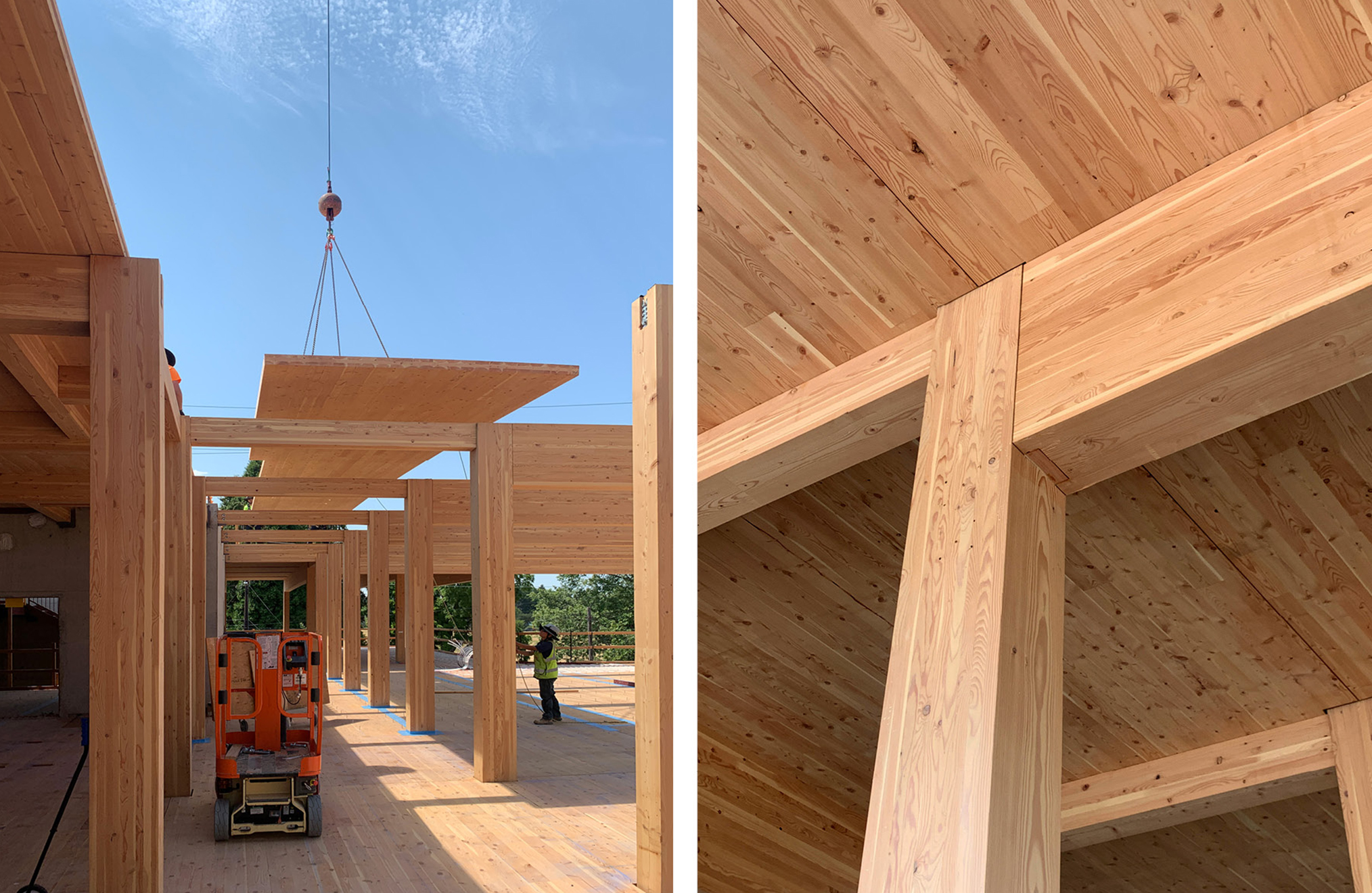


05.04.23
Kicking off a multipart series highlighting Bora’s mass timber efforts, we collected the major takeaways from staff who attended the recent International Mass Timber Conference in Portland.
My personal takeaway was the impressive dedication and interconnectedness of the timber community in Portland, including the team at Bora. As you’ll see in the subsequent responses, we have deeply knowledgeable folks who approach timber from unique and distinct perspectives. Corey Squire provides valuable insights on carbon management and ecological considerations; Stefee Knudsen discusses both the importance and strategies for incorporating mass timber on a project; and Matthew Robinson reflects on Bora’s approach to timber and its integration with building systems.
“The United States has underutilized wood resources. While timberland in the U.S. has slightly increased or remained the same over the past 50 years, the total volume of wood in U.S. forests has significantly increased over this same time period. An increase in wood construction is not a threat to our forests, but a product that can increase their value and encourage sustainable management practices. To quote a presenter from the USDA, ‘Mass timber is a byproduct of healthy, sustainably managed forests.’ “
—Corey Squire, Sustainability Director
“In the spirit of a ‘single lesson or unexpected takeaway’ is the imperative of moving away from concrete and steel for the sake of…everything, but also the ethical and equity imperative of bringing healthier buildings, including mass timber construction, to communities that have been marginalized or experienced social and climate injustices. Anyeley Hallova’s opening keynote struck me as a call to action. If we approach every project with the mindset of “What will it take for this to be mass timber?” and “What will it take to cut out almost all concrete and steel?”–except where necessary, like in the foundations–then I think it will help us make the case.
“Finally, we are already knowledgeable about how to make economic and efficient mass timber buildings, so we don’t need convincing! Our hurdles generally exist in the mindset of the owner, the initial attitude and knowledge of the contractor in terms of holistic pricing, and in being able to have the time to work through the mass timber strategies with all the above and the systems.”
—Stefee Knudsen, Principal
“As a young designer starting my career, this was my first Mass Timber Conference, though it was not my first exposure to the world of mass timber. At the University of Oregon I took a studio with Judith Sheine, largely supported by TallWood Design Institute, which was my first deep dive into the basics of designing with mass timber.
“As it affects our work, collaboration and early coordination are key. To make mass timber projects happen, every choice you make from the very onset of a project needs to be in service of that outcome. Because construction type, occupancy, fire ratings, acoustic performance, MEP systems, etc. all have a critical impact on the desired outcome, it seems that conversations about mass timber need to happen as early in the project as possible. For our work specifically at Bora, very early kickoff meetings for the Project Performance Requirements are the way we tackle this.”
—Matthew Robinson, Architectural Designer
It was truly inspiring to be in a room with others who shared our commitment to mass timber research and design, especially as we are seeing our first mass timber project, the PCC Metro Center, come to life. Stay tuned as we continue to advocate for this crucial building resource!